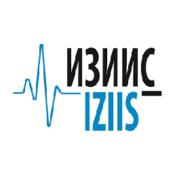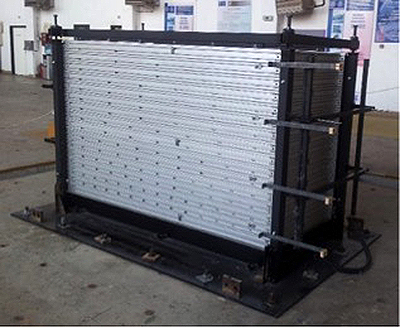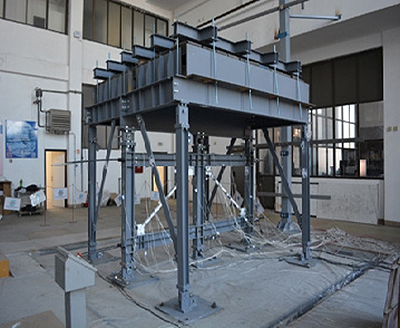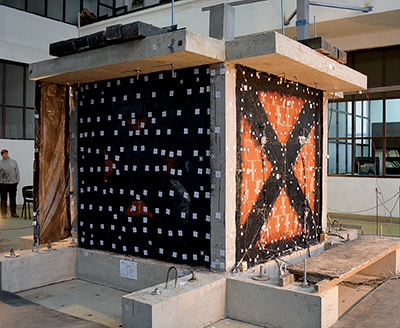OBJECTIVES:
Provision of access to the following infrastructure(s):
IZIIS-DYNLAB
Name of the infrastructure and its installations:
IZIIS’ Dynamic Testing Laboratory (DYNLAB) Shake Table
Location (town, country) of the infrastructure:
UKIM, IZIIS, Skopje, Republic of North Macedonia
Web site address:
http://www.iziis.ukim.edu.mk
Reference contact for potential TA user groups:
Vlatko Sesov – vlatko@iziis.ukim.edu.mk
DESCRIPTION OF THE INFRASTRUCTURE:
The IZIIS’ Dynamic Testing Laboratory (DYNLAB) is part of the Institute of Earthquake Engineering and Engineering Seismology (IZIIS), at the Ss. “Cyril and Methodius” University in Skopje, Republic of North Macedonia. The Laboratory is unique of its type in the region of Western Balkan Countries, as well as surrounding countries that are members of EU.
The shake table in DYNLAB is 5 DOF (Degrees-of-Freedom) MTS shake table having MTS Digital Controller 469D and has been operational since 1982. It is 5.0 m x 5.0 m in plane, allowing testing specimens under independent excitations of various types: sinusoidal, random, shock and time-history with 0 to 50 Hz frequency ranges. The max payload is 40 t. The peak velocity of the shake table is 1m/s and peak displacement is 0.125 m in the horizontal direction, while in vertical direction 0.5 m/s and 0.05 m respectively. The max acceleration is 3.0 g, and 1.5 g, in horizontal and vertical direction respectively, both for bare tables. The laboratory has 72 channel PXI-system for simultaneous data acquisition of various transducers, as well as 80 channels modular DAQ system for strain measurements, both from National Instruments Inc. The Laboratory possesses professional and tailor-made software (using LAB VIEW and MATLAB tools) for data acquisition, pre- and post- processing of measured data, as well.
DYNLAB has a set of three high-definition cameras, allowing telepresence, i.e., audio and video presence during the laboratory activities as well as recording and limited control of the view point. A special dedicated and secured link can be shared with the participants/users and the virtual presence can be enabled by the Microsoft Office 365 Teams and Stream applications. The comprehensive Dahua network cameras are installed in the testing laboratory. Their PTZ- pan-tilt-zoom characteristics, combined with 25 times optical zoom gives the remote-accessed personnel opportunity to observe damage and specimen behavior, close, in a way as they are present in the laboratory. The maximum 25/30fps at 1080P allows excellent video recording capabilities.
The laminar container is originally designed to be used for investigation of different kinds of geo-models on the shake table in the Institute of Earthquake Engineering and Engineering Seismology – IZIIS supported by the European FP7 Project UREDITEME REGPOT-2008-1 (Upgrading of Research Equipment for Dynamic Testing of Large-Scale Models), grant no. 230099. The dimensions of the laminar container are 2.0 x 1.0 m at base and 1.5m in height (http://www.iziis.ukim.edu.mk/mk/labs/soillab/). The total weight of empty container is 1553 kg and consists of the following main components:
(a) 16 Aluminum layers/rings and ball bearing system; (b) Steel base plate with the saturation and drainage system; (c) Rigid steel frame which enables the integrity of laminar layers; (d) Flexible rubber-based membrane which covers the internal area of container’s walls. Particular attention has been made towards boundary conditions that the laminar container satisfies. The unique design of laminar rings and system of rollers overcome some of the shortcomings experienced at previous laminar containers such as boundary conditions, saturation, drainage, instrumentation. The performance of the laminar box was tested in 2015 and the results confirmed that the design criteria were fulfilled and that the laminar box could be used in further model testing on saturated geo-models. The results proved the shear beam type response of the soil simulating the free-field conditions and the effectiveness of the laminar box system for 1-g table tests. Accelerometers (ACC), LVDTs and Pore water pressure transducers (PWP) are available to measure physical quantities.
Besides the laminar box and shake table, IZIIS in the same facility can offer access to the following:
- natural sand – Skopje sand which is available in the lab (enough material to perform a test in the laminar container), natural sand from the Vardar River terraces for which significant studies were performed up to know (Bojadjieva et al., 2019, Sheshov et al., 2019, Bojadjieva (2015) etc.);
- access to the Soil dynamics Lab consisted of a cyclic simple shear device and dynamic triaxial testing machine for possible element test characterization of soil material which will be used in SSI studies. This will be the case if researchers decide to bring their soil material for testing.
With the mentioned additional facilities on site, IZIIS makes an excellent environment to perform limited size Soil -structure interaction tests in laminar containers on a shaking table, where Skopje sand is available, and access to the element testing lab is provided.




